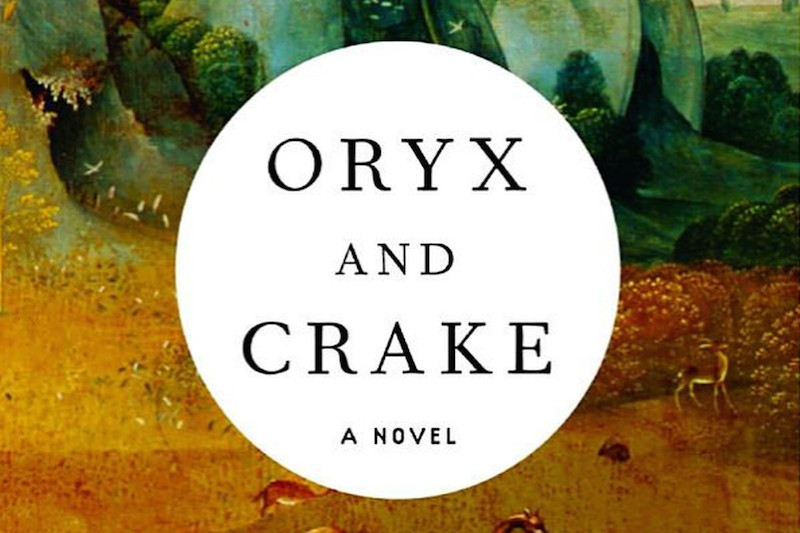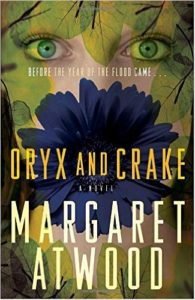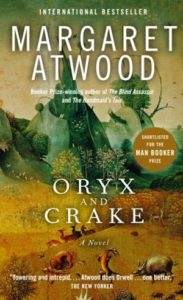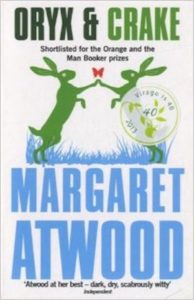

After everything that’s happened, how can the world still be so beautiful? Because it is.
*
“In her chronicling of contemporary sexual manners and politics, Atwood has always been interested in pilfering popular forms—comic books, gothic tales, detective novels, science fiction—in order to make them do her more literary bidding.
In her towering and intrepid new novel, Oryx and Crake, Atwood, who is the daughter of a biologist, vividly imagines a late-twenty-first-century world ravaged by innovations in biological science. Like most literary imaginings of the future, her vision is mournful, bleak, and infernal, and is punctuated, in Atwood style, with the occasional macabre joke—perhaps not unlike Dante’s own literary vision. Atwood’s pilgrim in Hell is Snowman, who, following a genetically engineered viral cataclysm, is, as far as he knows, the only human being who has survived. Snowman (formerly Jimmy) has become arboreal, living in trees and in shelters of junk, roaming the beaches and picnic grounds of a former park—where fungi sprout from rotting picnic tables and barbecues are festooned with bindweed—scavenging for food. His only companions are a dozen or so humanoids, the Crakers—gentle, naked, beautiful creations of Jimmy’s old, half-mad scientist friend Crake. Freed from their experimental lab, the Crakers also live near the beach. They eat nothing but grass, leaves, and roots; their sexual rituals have been elegantly and efficiently programmed to minimize both sexual reproduction and unrequited lust. To them, the man they call Snowman is a demigod or a prophet. Unable to tolerate sunlight, Jimmy wears a ghostly bedsheet. For the Crakers, the real gods are Crake, whom they have never seen, and his girlfriend, Oryx, whom they have. The Crakers await their return and listen to stories that Snowman tells them about Crake and Oryx. A holy, yarny scripture is already emerging.
Parallel with this vision of a blighted future is the novel’s dramatic story of how the global apocalypse came to pass, told in flashback. Jimmy and Crake grow up as friends in gated communities, safe from the environmental degradation that has already overtaken the outside world. They are the privileged children of scientists who work for top-secret agribusiness and biotech companies with names like HelthWyzer and OrganicInc Farms. The latter, for medical-transplant purposes, makes pigs that are genetically altered with human DNA; after the apocalypse, these extra-clever ‘pigoons’ go hunting for Snowman like hounds after a fox.

“Tonally, Oryx and Crake is a roller-coaster ride. The book proceeds from terrifying grimness, through lonely mournfulness, until, midway, a morbid silliness begins sporadically to assert itself, like someone, exhausted by bad news, hysterically succumbing to giggles at a funeral.
…
“In the novel’s whimsical fantasies of biological evolution and technology, one can discern the dark left hand of Ursula K. Le Guin, and in its shrugging, eschatological amusement it channels the spirit of Kurt Vonnegut. In fact, the sick joke and the botched experiment are offered up as rough equivalents and become, through the technical alchemy of the novel, a kind of trope for life itself.
Seventeen years ago, Mary McCarthy, reviewing The Handmaid’s Tale, found it unconvincing as a jeremiad: ‘Surely the essential element of a cautionary tale is recognition. . . . It is an effect, for me, almost strikingly missing.’ … But a dystopian novel is not intended as a literal forecast, or even necessarily as a logical extension of our current world. It is simply, and not so simply, a bad dream of our present time, an exquisitely designed horror show in which things are changed from what we do know to a dream version of what we don’t. Atwood does this well. To ask a novel to do more is to misunderstand its nature. Besides, given what is known about fish-gene-enhanced tomatoes—or those genetically modified goats that produce spider silk—the biologically reëngineered world of Oryx and Crake ceases to seem very far-fetched.

“With such a portrait of devastation, it may be important for the reader both to know and to feel what it is that Atwood values. (It is, arguably, immoral of an author not to share.) Given all that has been destroyed, and what has survived, has she discovered anything of worth from the old world that is ours? What is enduring and significant? What can be remembered and held dear? Clearly, she tells us, language. Also lovemaking, a jazz horn solo, the attractiveness of an imperfect body, and twelve thousand years of man-canine devotion. But there is a more pervasive and recurrent idea, one that would be sentimental if it were not for its inherent animal truth, and that is the power of maternal love. Jimmy scans the world—news footage, postcards sent in code—for his lost mother … The ur-mother in Oryx and Crake is, of course, Mother Nature herself—captured, tortured, and mocked, in classic gothic fashion, but elusive and indestructible, in her way. As a curious aside in this year’s fiftieth-anniversary celebration of the discovery of DNA by Watson and Crick, it was reported recently that Crick’s wife, a professional illustrator, did only two scientific drawings in the course of her career. One was of her husband’s famous double helix. The other was of a woman running.”
–Lorrie Moore, The New Yorker, May 19, 2003

